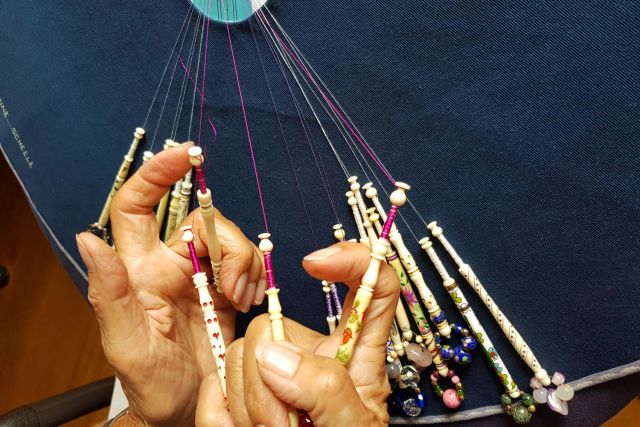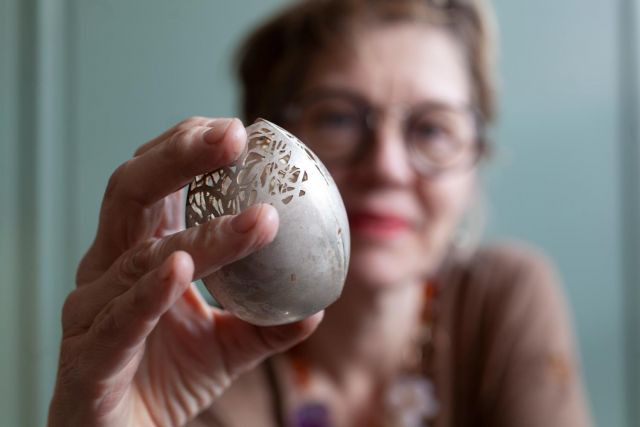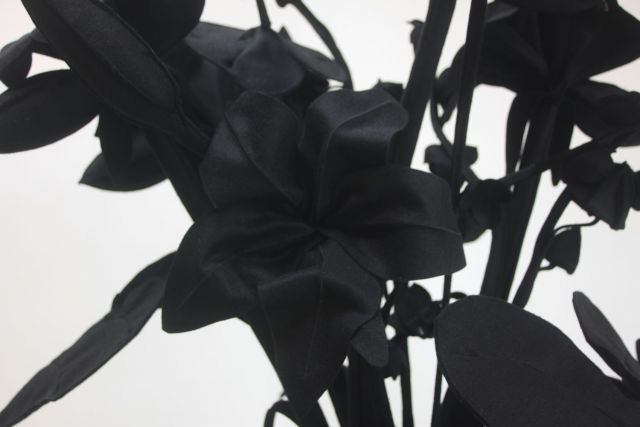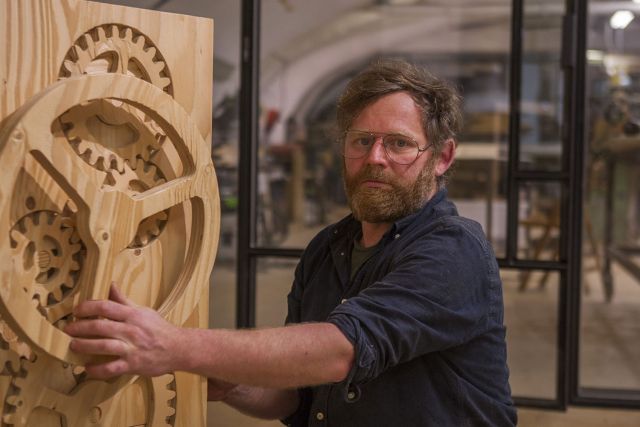This white rose is made of bobbin lace, inspired by an exhibition in Brussels some years ago. A shawl – depicting a garden with flowers – was on show. It was worked in a combination of needle lace and bobbin lace. It was made for the Empress of Austria in 1870. Yvonne felt challenged to work this in bobbin lace, with a lot of details. Although it is flat, the lace technique suggests depth, making it a ‘real’ rose. It is attached to a blue, silk button and may be used as a corsage.
Width 5 cm
Height 3 cm
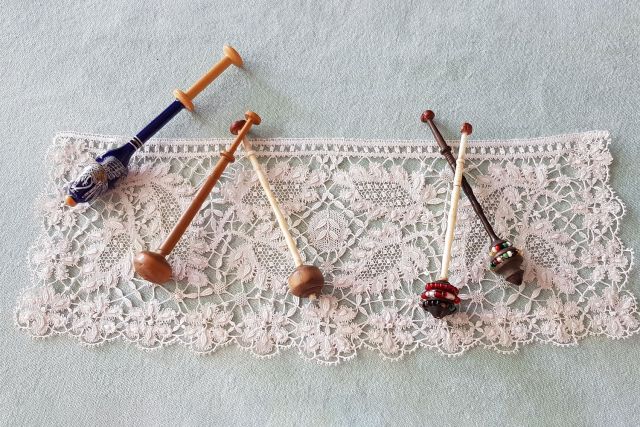
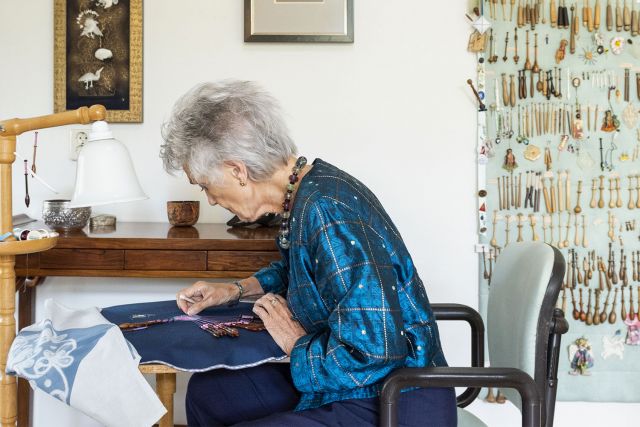
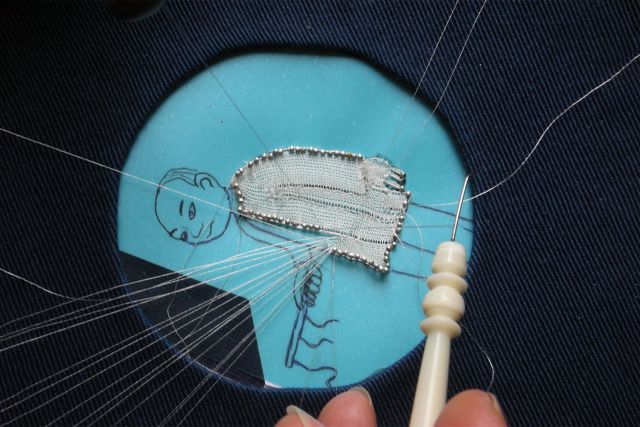
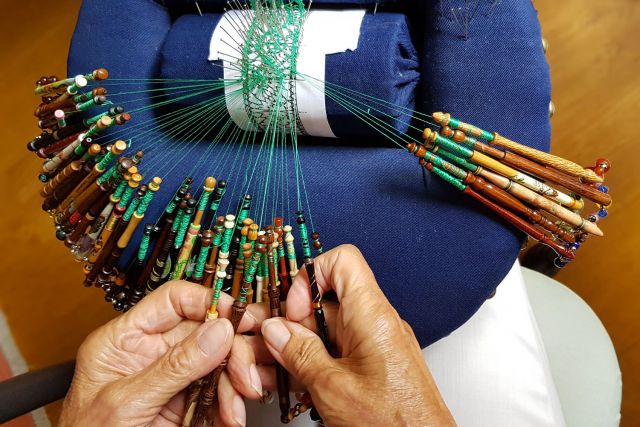
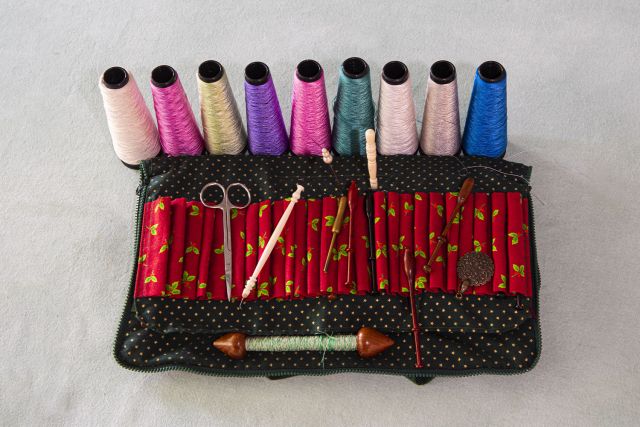
Yvonne Scheele-Kerkhof
- Paragon
- Lacemaker
- Apeldoorn, Netherlands
- Master Artisan
By appointment only
+31 614285954
Lacemaking as a springboard
- • Yvonne uses antique bobbins as a catalyst
- • Her lacework is like painting with threads
- • A lacemaking publication is one of her highlights
Yvonne Scheele-Kerkhof’s journey into lacemaking began whilst living in England. She would regularly pass the same antique shop and each time her eye would be drawn to an antique set of wooden and bone bobbins. She eventually purchased them, intrigued at what she could make with them, having completed a course in fashion in Guildford. The bobbins inspired Yvonne to take lace-making courses that have since led her to create textile art works using a combination of Floral Bedfordshire and a Dutch technique called Withoff Duchesse. An experimental approach to lacemaking has led her to incorporate embroidery techniques into her garments and textiles, producing intricate textile paintings such as a peacock embellishing a cape and a detailed Chinese dragon.
Read the full interviewWorks
Photo: © Yvonne Scheele-Kerkhof

Photo: © Yvonne Scheele-Kerkhof
A golden pheasant is one of the many types of pheasants in China and is distinguished from other types through his long, curved tail feathers. Characteristic for the male is the golden comb and lower back. It was pictured on a square badge which decorated the gown of a second ranking Chinese civil servant. The nine ranks of civil officials were each depicted by a different bird. This is bobbin lace worked in parts using gold and silk thread.
Width 9 cm
Height 8 cm

Photo: © Fotostudio Jan Krüger
In Chinese mythology, the dragon is positioned at the top of the hierarchy of mythical animals. There is smoke coming from his mouth and hanging around his tail. By highly decorating the body of the dragon and using a dense ‘weave’ for the flute-playing boy, Yvonne succeeds in differentiating the two figures. The detailed dress of the boy shows the richness of his coat. This piece is also bobbin lace, worked in parts.
Width 20 cm
Height 12 cm

Photo: © Tine Oderkerk
This band of meadow flowers is part of a border at the base of a green coat, inspired by an exhibit in a Viennese museum. Yvonne started combining bobbin lace with other techniques and this design lent itself to that. Most of the flowers are lace, some are embroidered. The grasses are in Japanese embroidery in which the threads are made by combining colours, creating a gradation in the colours of the grass stalks. The ‘ground’ is in Point de Marseille technique.
Width 120 cm
Height 22 cm

Photo: © All rights reserved
This peacock started off as a rooster. The inspiration came from Japanese embroidery in a museum in Lisbon, depicting four roosters. Yvonne visualised herself with a cape on which the head is positioned on one shoulder and the tail appears on the other side. The rooster was eventually turned into a peacock, preferring blue, yellow and red colours. The bird is worked in a combination of bobbin lace (worked in parts), Japanese embroidery and Point de Marseille.
Width 22 cm
Height 20 cm





